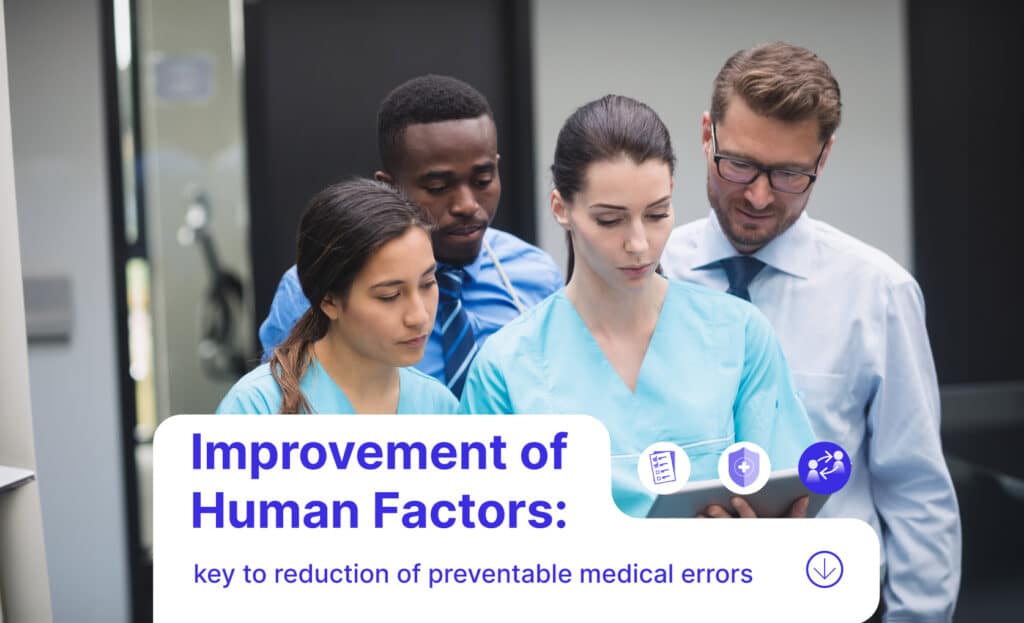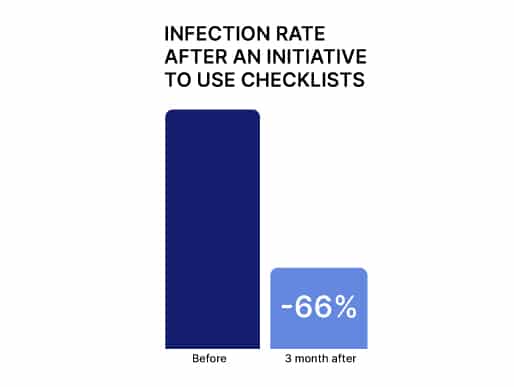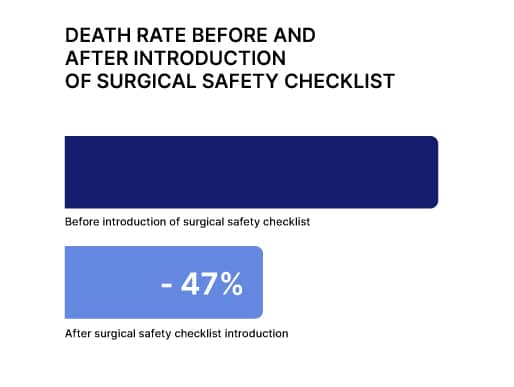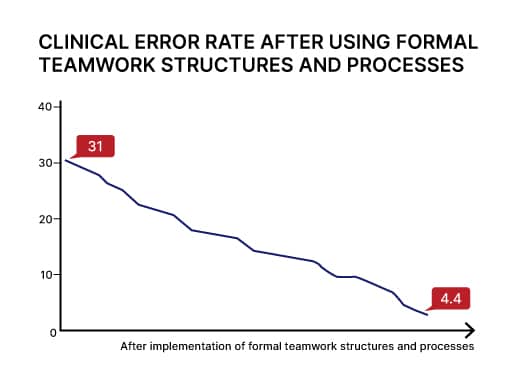
Did you know that about 10% of hospital admissions result in unintentional harm? In the U.S. alone, over 100,000 deaths each year are estimated to be caused by medical errors.
In 1999, the U.S. Institute of Medicine (IOM) revealed that more than 50% of the estimated 44,000 to 98,000 annual fatal medical errors in the United States could have been prevented.
The primary cause of these medical errors?
Human Factors.
Humans make errors – that is as expected as the sun rising in the east. To many people’s surprise, healthcare personnel are no exception.
But here’s the silver lining – we can do something about it.
Medical crew resource management (CRM) training is becoming increasingly popular as a tactic to reduce preventable medical errors. This unique training approach focuses on enhancing cognitive and interpersonal skills such as communication, situational awareness, problem-solving, decision-making, leadership, assertiveness, and teamwork rather than the technical skills of the medical crew.
In this article, we’ll explore the definition of crew resource management, its background and what it can do for patient safety. We’ll also dive into what human factors in healthcare means and how to address them.
Discover our other articles on healthcare.

Crew Resource Management (CRM) training originates from aviation. In 1979, NASA investigators started inspecting the root causes of aircraft crashes.
Turned out that technical malfunction and lack of proper handling skills were rarely the leading cause – human factors were. Factors such as communication breakdown, decision-making errors, and ineffective leadership.
So, in response to this, they developed a new training approach for flight crews. This training should focus on self-awareness, adaptability, situational awareness, group dynamics, leadership, interpersonal communications, and decision-making – what we today know as crew resource management.
What do human factors mean in the healthcare industry?
Despite our best intentions, we humans make mistakes. We misunderstand and mishear. We enter the wrong information into digital records and overlook vital data when making decisions. We become tired and distracted. It is these human behaviours and limitations that make up human factors.
It’s no secret that patient safety has been a major concern in recent years. Experts agree that human factors play a significant role in adverse events in healthcare.
Just like aviation, the medical field relies on teams of experts working together to carry out complex procedures that, if not done correctly, can have severe consequences. If 98,000 people died in plane crashes each year, it would be equivalent to a fatal jet crash – 268 passengers – every day.
Human factors science aims to enhance the design of a system, enabling us to better anticipate and handle errors, rather than eliminating human error. In the healthcare industry, this translates to supporting the cognitive and physical efforts of healthcare professionals to ensure high-quality patient care.

There’s a reason you don’t see the headline “Another jet plummets from the skies” in your daily newspaper.
Since its founding in 1979, the aviation community has acknowledged human factors as a crucial part of operational safety and efficiency. Instead of trying to limit human error, they integrate Crew Resource Management training into flight crews’ annual training.
Crew Resource Management for medical staff doesn’t focus on the technical skills of the medical crew – the moment medical professionals receive their medical licenses, they already possess knowledge of the various symptoms, understand the distribution of medicine, and are familiar with the steps of complicated procedures.
CRM training doesn’t intend to pass on these technical aspects. Instead, it focuses on reducing errors by enhancing one’s non-technical skills.
And we’re not talking about theoretical concepts; we’re talking about practically applying and inducing human factors in healthcare by designing work systems and processes that make it easier to do the right thing and harder to do the wrong thing.
Today, various healthcare settings, including operating rooms, anesthesia departments, emergency departments, intensive care units, and labor and delivery departments, use CRM training programs to improve patient care by increasingly implementing standard cockpit procedures such as communication protocols, checklists, and team briefings.
CRM principles have been taught to pilots for decades. In fact, most pilots don’t know of a world before CRM. And its principles have become an integral part of what it means to be a good pilot.
But as you can probably imagine, Rome wasn’t built in a day. And a Roman empire, such as shifting an entire industry’s mindset and training approach, isn’t a quick fixer.
Furthermore, training in medicine have traditionally focused on developing one’s technical proficiency, and CRM focuses on facilitating human interaction. Shifting the focus toward communication and information flow rather than skill requires a cultural shift in medicine. In one recent study, surgical teams complied with only 60 per cent of the CRM practices emphasised during extensive CRM training.
For CRM to work, healthcare professionals must believe in its inherent value.

While CRM can quickly seem like some mumbo-jumb – it does actually work!
Here are a few highlights of how healthcare providers have used CRM techniques to reduce medical errors:

In Michigan, the infection rate in ICUs decreased by 66 per cent within the first three months of a widespread initiative to use checklists. Michigan’s infection rates fell so low that its average ICU outperformed 99 per cent of ICUs nationwide. In the first 18 months of the initiative, hospitals saved an estimated $175 million and more than 1500 lives.

A 19-item surgical safety checklist developed by the WHO reduced the death rate within 30 days of surgery by 47 per cent. This study involved eight hospitals around the world. Major complications dropped from 11 per cent to 7 per cent. The checklist included items such as marking the body part to be operated on before giving the patient anaesthesia, before making the first incision, making sure that everyone in the operating room knew one another and what their roles would be, and checking that all needles, sponges and instruments were accounted for after surgery.

In 9 Emergency Departments where formal teamwork structures and processes were implemented, the clinical error rate decreased from 31 to 4.4 percent.
In a lot of ways, these numbers speaks for themselves.
So, the question is not “Does CRM training work?” but rather “What do we need to make CRM training a standard practice in healthcare?”.
Avoiding errors is of increasing concern as medical procedures and the equipment used to carry them out become increasingly complex. Aviation has successfully used Crew Resource Management (CRM) to reduce the errors that lead to accidents. Its guiding principles, which include communication, situational awareness, problem-solving, decision-making, and teamwork, apply to medicine and are valuable tools that can be used to increase patient safety.
Being human brings with it many benefits and one disadvantage – we can never eliminate error. The Roman Philosopher Cicero (106–43BC) wrote that anyone can make a mistake, but only a fool persists in error. Recognising that we are all fallible is one of the first steps to improving the safety of our patients.
At NaviMinds, we deliver highly impactful training for healthcare professionals derived from the Crew Resource Management programs developed in aviation. Contact us today to find out more: +45 26 37 39 39 or ask@naviminds.com
Dive into our insightful and informative articles that will help you explore more and get ahead of the competition.
© 2024 NaviMinds – Designed by Aveo web&marketing